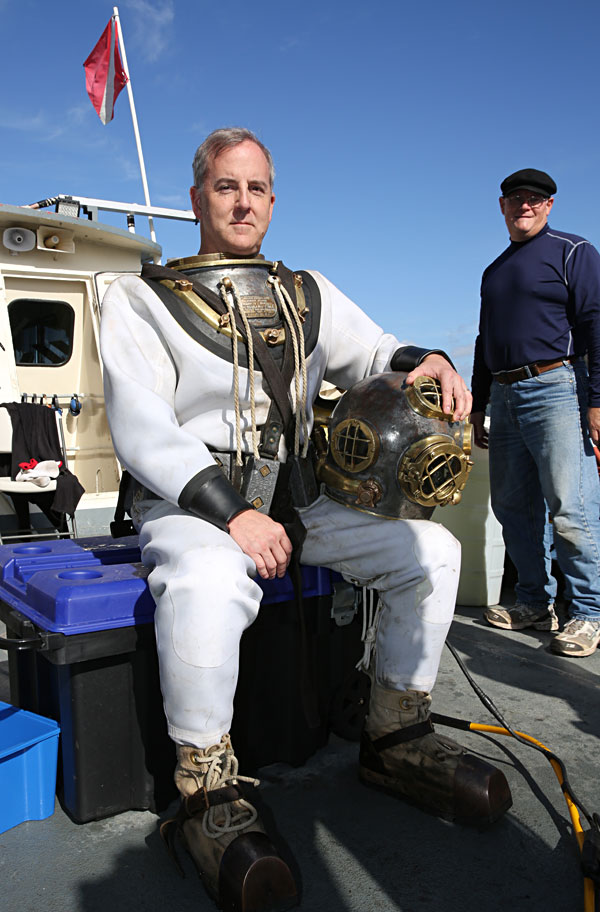The Northwest Diving History Association concluded their annual weekend meeting and event Sunday evening in Olympia, Washington. The event marks the fifth year for the Association, which is dedicated to recording and preserving the history of the people that contributed to the development of scuba diving in the North Pacific Region.
On a rainy, cool Fall day, the first day of the conference was held in the conference room of Tugboat Annie’s restaurant in Olympia, where 40 attendees listened to presentations by veterans of the dive industry who shared their knowledge and lifetime experiences diving in the Pacific Northwest. Hosted by Board member Tom Hemphill, the annual meeting was open to both members of the organization as well as the public.
Spence Campbell – a lifelong dive instructor, commercial diver, commercial diving supervisor, scientific diver, diving physiology researcher, and research diver – shared an overview of the Northwest Diving Pioneer Awards. He discussed the value of this special award and gave an overview of the people that have received this award in the past.
Bruce Higgins, who has developed the Edmond’s Underwater Park attractions for the city over the past 30 years, presented a very in-depth history of both the park and the town of Edmonds, with dozens of historical photos, stories, and facts about this underwater park. Edmonds Underwater Park is currently the most popular of 10 underwater parks that make up Washington’s underwater park system, and attracts more than 25,000 scuba divers visiting each year.
Bruce has had expensive experience planning, coordinating, and managing the park, sinking wrecks and other attractions for divers, and setting up underwater “trails” for divers to follow at the park. His knowledge of both diving and history is extensive and he’s an equally talented presenter.
After lunch, David McLean and John Ratliff presented a fascinating (and entertaining) history of buoyancy compensation devices (who knew it started in 722 B.C. with an Assyrian underwater army who made underwater breathing bags from goat skins?).
They also shared examples of many “modern” BCD’s that have been designed and used over the past 50 years, including experimental designs that never became popular, and others that have featured designed decades ago that are still in use today.
Dennis Lucia concluded Saturday’s session with an entertaining session of “Memories of the good old days” – sea stories contributed by anyone in the room.
On Sunday, the skies cleared and beautiful weather treated a handful of divers who had the opportunity to dive in an original U.S. Navy Mark V dive helmet. Dennis Lucia, the Nisqually Tribe Department of Natural Resources Manager and Diving Supervisor (and Diving History Association Board member), supervised the divers and a surface support team as they descended down a ladder and into the Puget Sound. The dives were a fundraiser for the Association, and a unique opportunity to dive in the vintage dive gear.
The Northwest Diving History Association is open to anyone interested in helping to recording and preserving the history of the people that contributed to the development of scuba diving. Annual membership fees are just $25, and divers and those interested in dive history are encouraged to join. Even those not interested in a membership are encouraged to join their mailing list to learn of upcoming activities and opportunities. For more information, visit their website at divinghistory.org.
Words, photo, and video by Chris Constantine, California Diver Magazine
.





